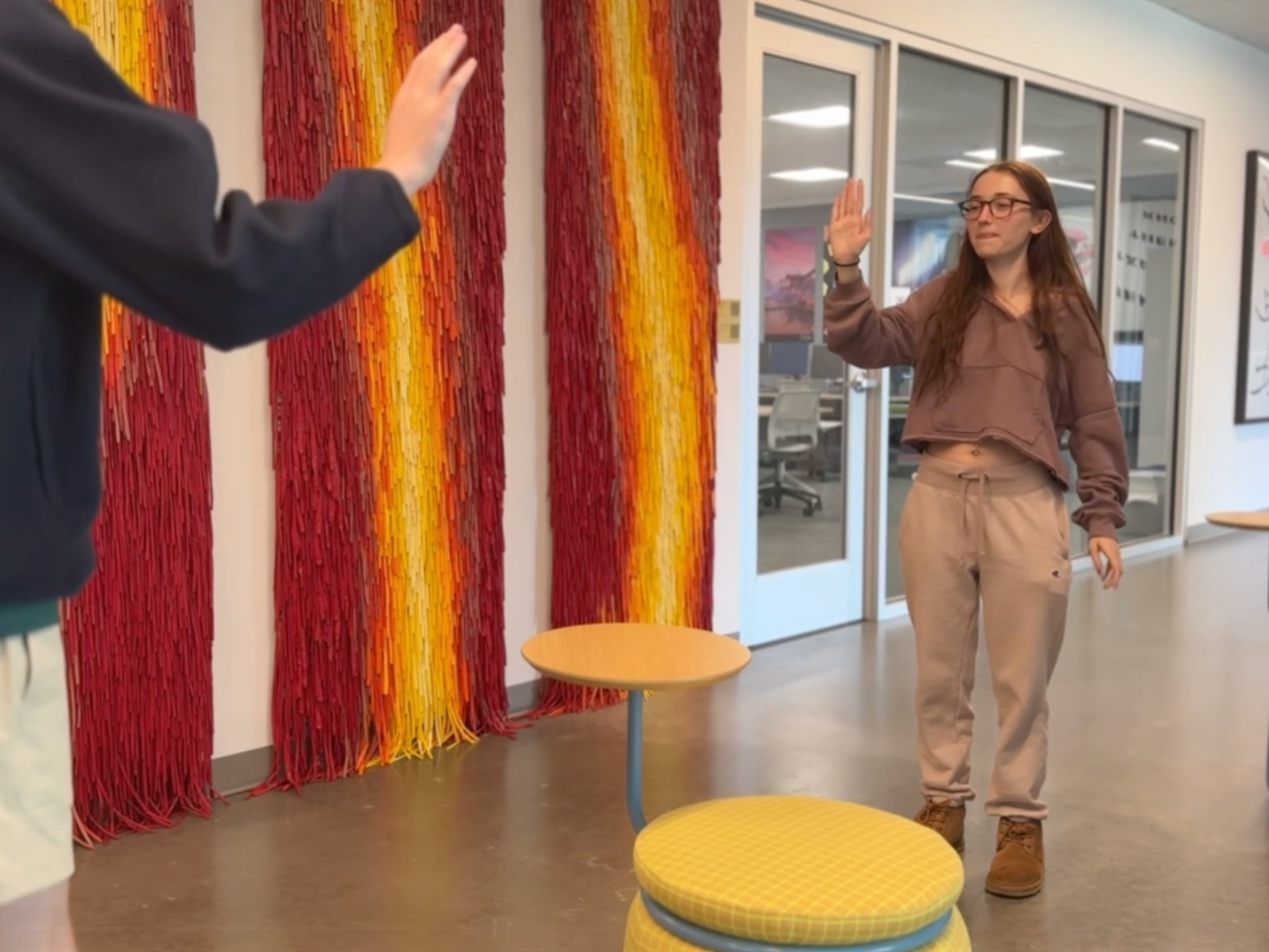Project Brief
This project, commissioned by the Dean of the Shiley School of Engineering, was initiated during the early design stages of the Shiley Marcos Center for Design and Innovation. Faculty and staff from the engineering department contributed ideas for how the building could facilitate innovative learning experiences and activities. Among these ideas was creating an Augmented Reality (AR) application to enhance educational engagement.
The initial concept envisioned an AR tool that would allow users to visualize the HVAC system through the building's walls, providing insights into air and heat flow. Additional features were proposed, such as tracking water usage, visualizing Wi-Fi activity, and monitoring building occupancy. The application was conceived as a product designed and built by students, specifically for the benefit of their peers, fostering a hands-on, collaborative learning experience.
Project Setup
From a class of 20 students, a team of four multi-disciplinary engineering students from computer science, engineering, and civil engineering were selected to work on this project.
Skanska USA sponsored this project and provided a Director of Design to support the students in gaining access to the construction site, the technical team installing the sensor network, and a third-party supplier developing the building dashboard (the one intended for actual building monitoring).
10 of the 12 weeks were dedicated to the project, with the course meeting twice a week for 1 hour and 15 minutes.
Approach
Taking on the role of Product Manager to facilitate the vision of a product designed and built by students for students and working with a three-year timeline, several phases were initiated to develop an MVP by the official building opening ceremony in Spring 2024.
Phase 1: Discovery (2021)
An interdisciplinary team of students engaged in a 10-week project using participatory design methods with students, faculty, and staff to discover the possibilities the technology might afford.
An interdisciplinary team of students engaged in a 10-week project using participatory design methods with students, faculty, and staff to discover the possibilities the technology might afford.
Phase 2: Define (2022)
A senior computer science capstone team initiated a simulated data environment, developed an API, and demonstrated the API.
A senior computer science capstone team initiated a simulated data environment, developed an API, and demonstrated the API.
Phase 3: MVP Design & Develop (2023)
Two teams were created. The first was an interdisciplinary innovation practicum team, and the second was a senior computer science capstone team.
Two teams were created. The first was an interdisciplinary innovation practicum team, and the second was a senior computer science capstone team.
Phase 3: MVP Design & Develop
The Shiley Marcos Center for Design and Innovation – Augmented Reality Experience is envisioned to provide a new layer of information, education, and entertainment to the University of Portland students, faculty, and staff in the Shiley School of Engineering, using building sensor networks, community generated content, and open data. This challenge builds on the previous INV practicum of Fall 2021; to continue the discovery and definition of use cases and to discover, define, and design user interface design and user experience specifications for mobile application or web application development. A component of this project is to collaborate with the Shiley Capstone Team.
Process & Deliverables
• Revised Roadmap
• User Stories
• User Story Map & Updated release schedule
• Use Case Specifications (1-3) - Featuring UI Design, Interaction Flow, Rough 3D models
• User Stories
• User Story Map & Updated release schedule
• Use Case Specifications (1-3) - Featuring UI Design, Interaction Flow, Rough 3D models









